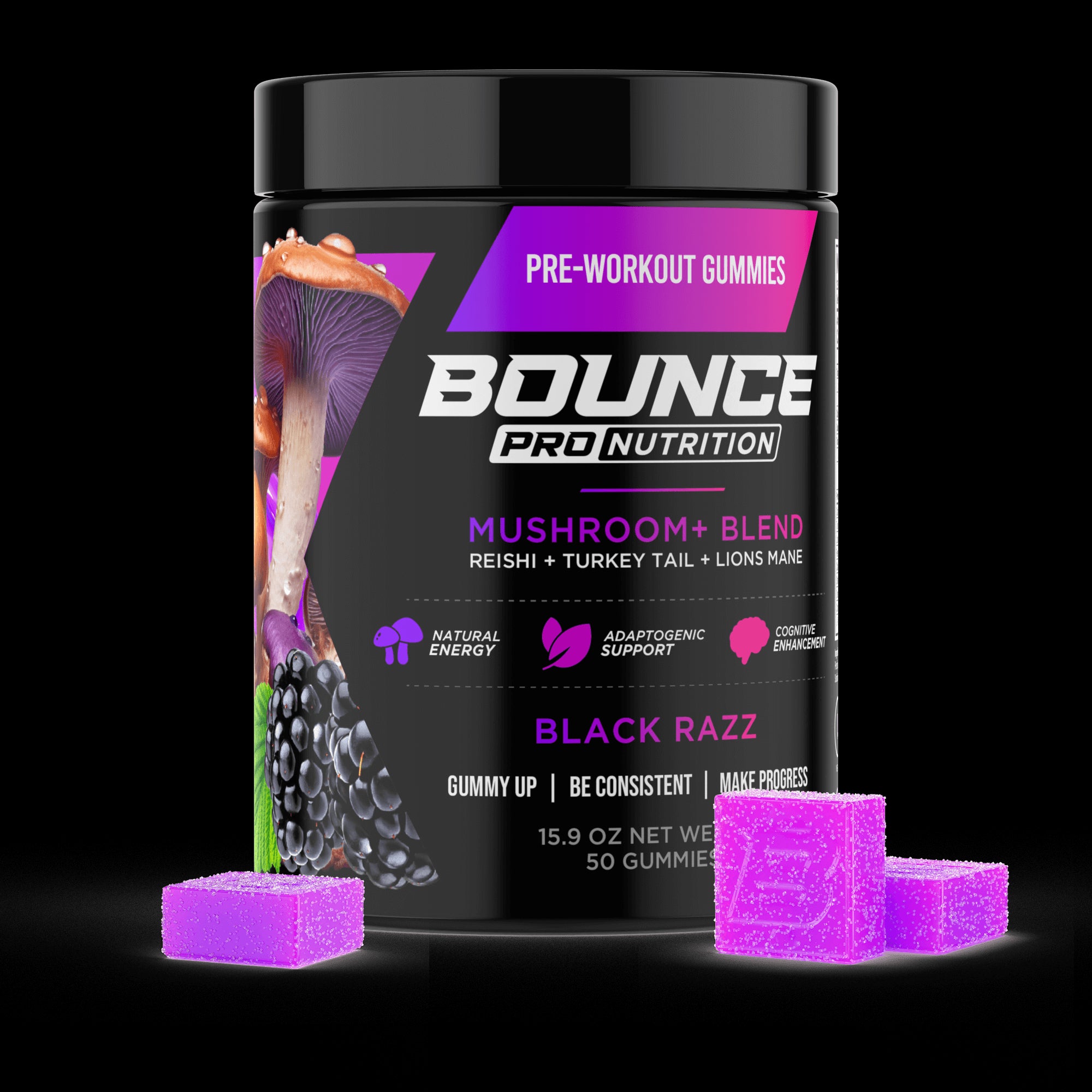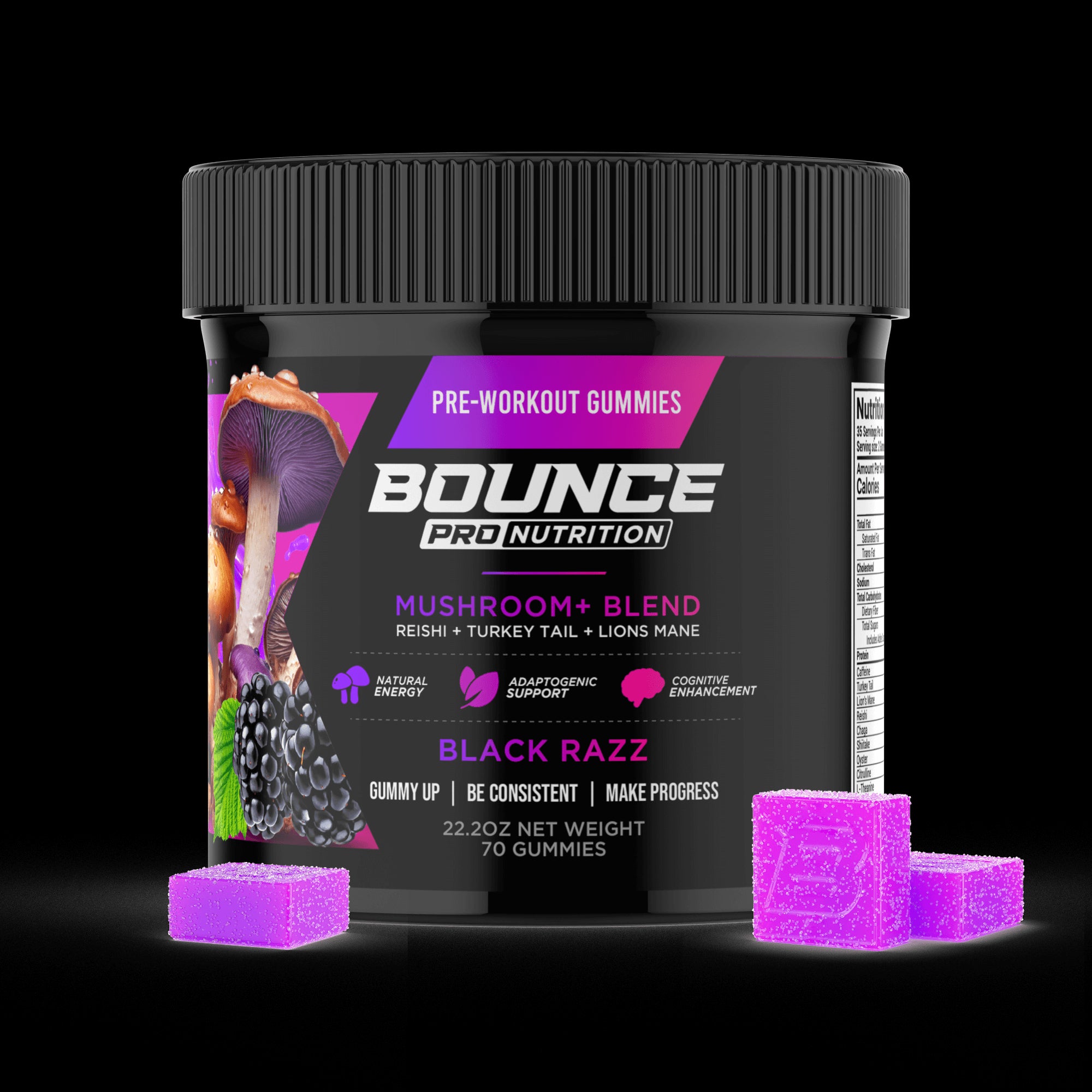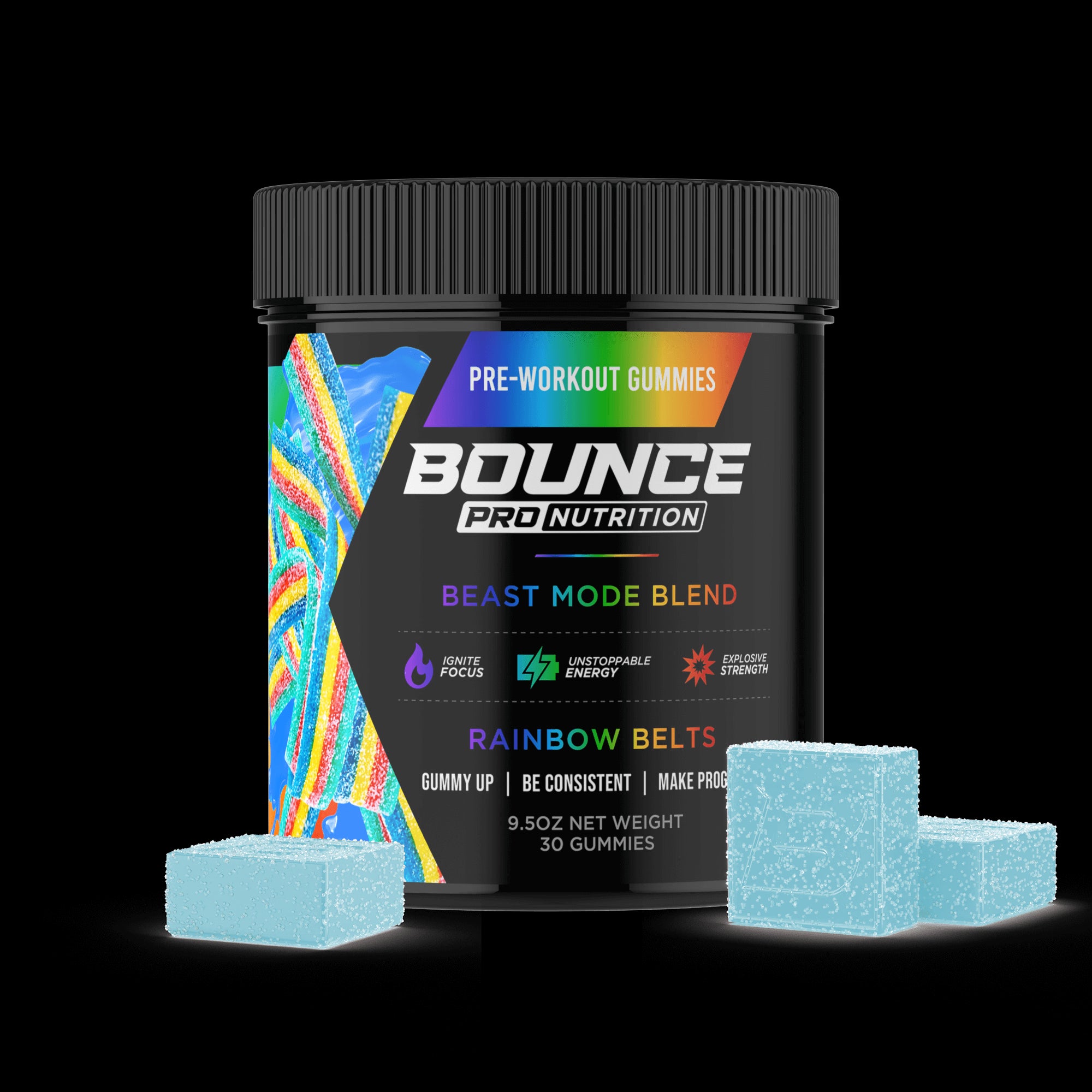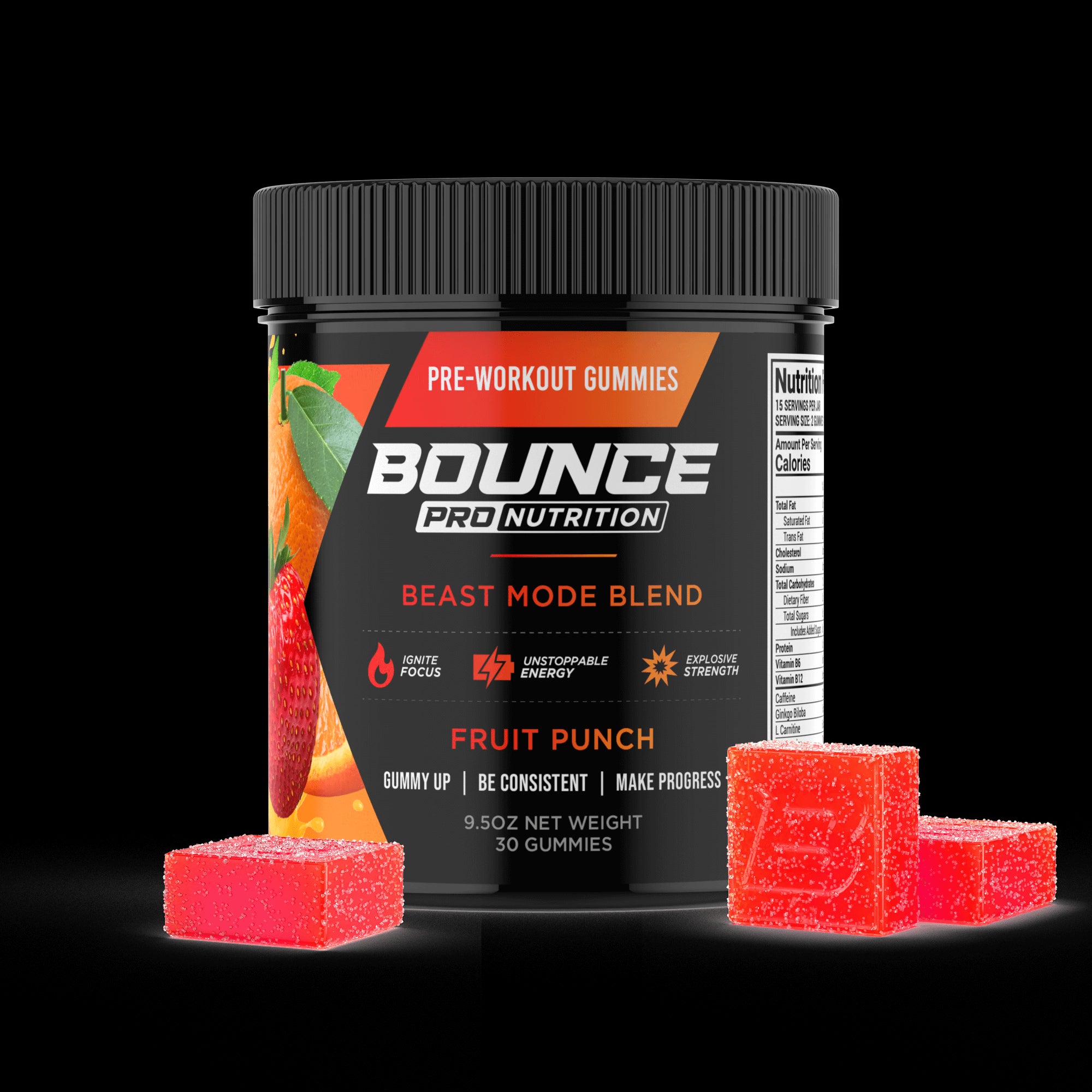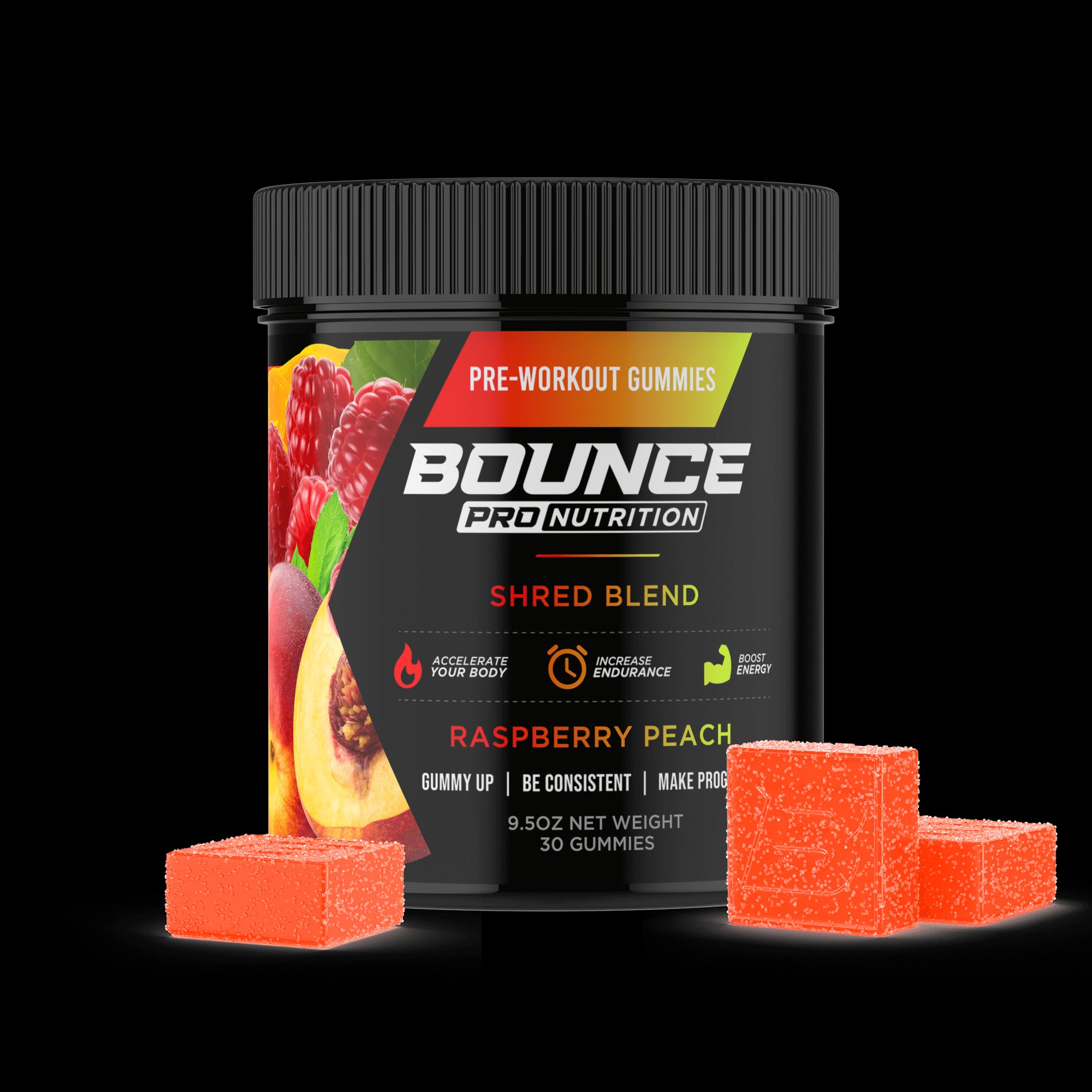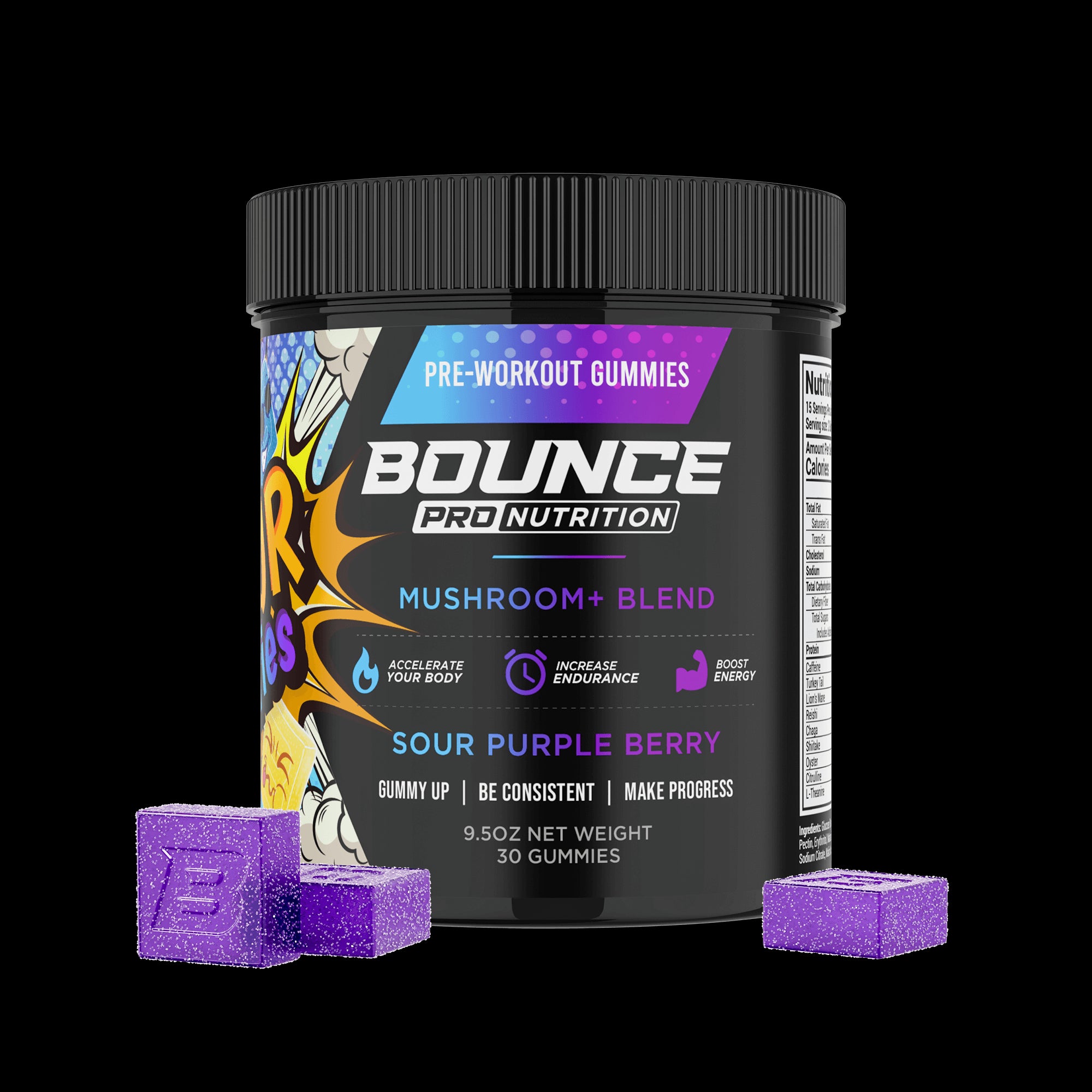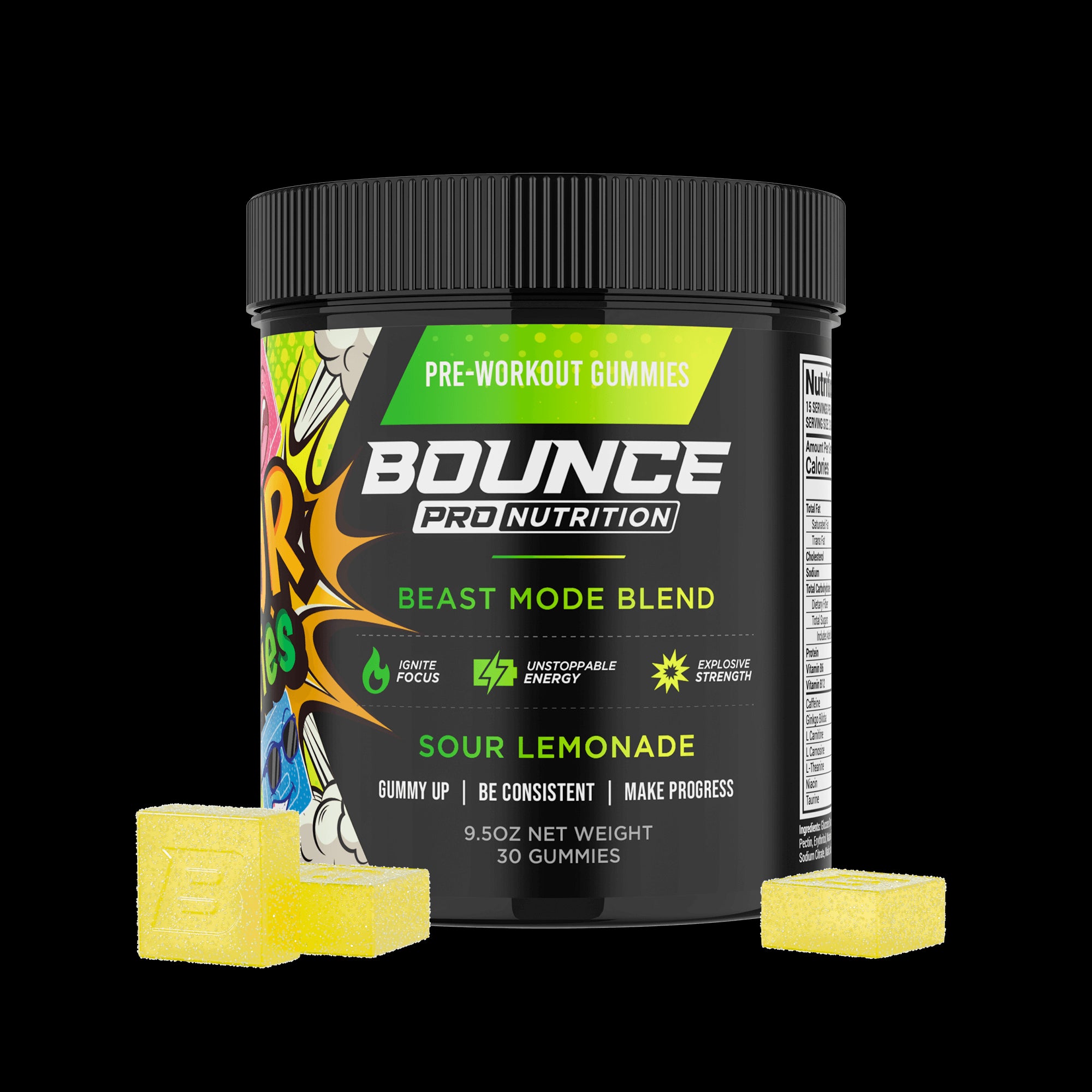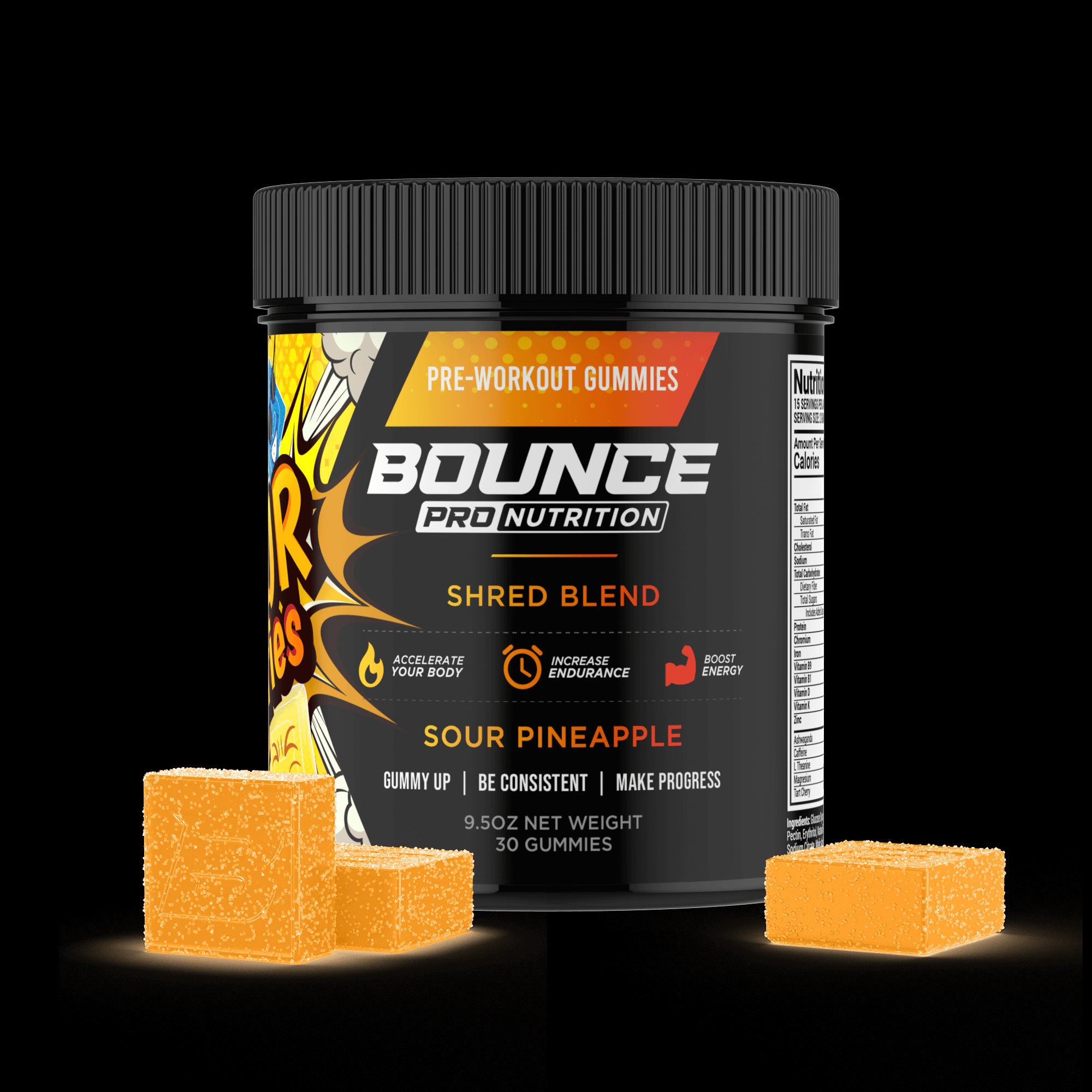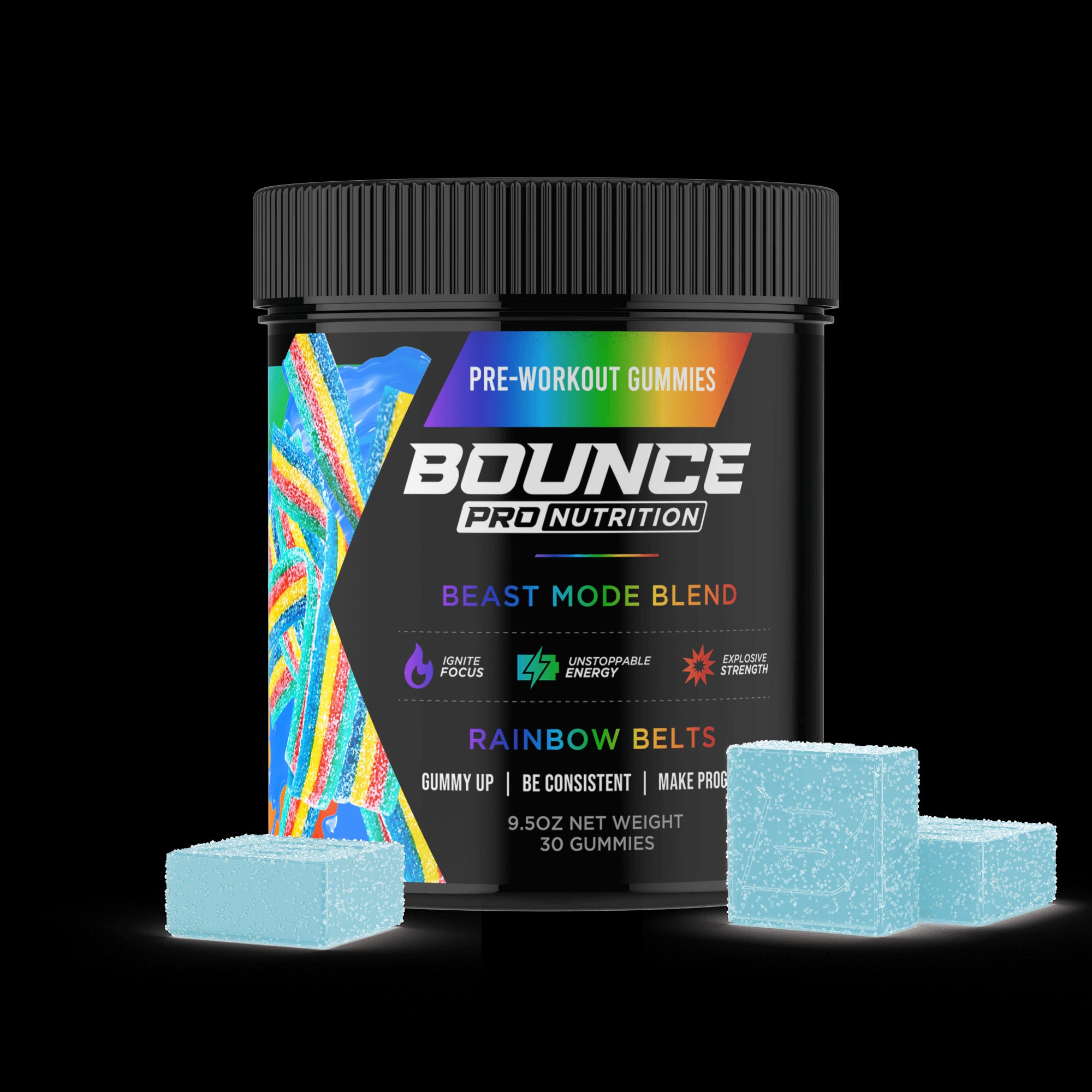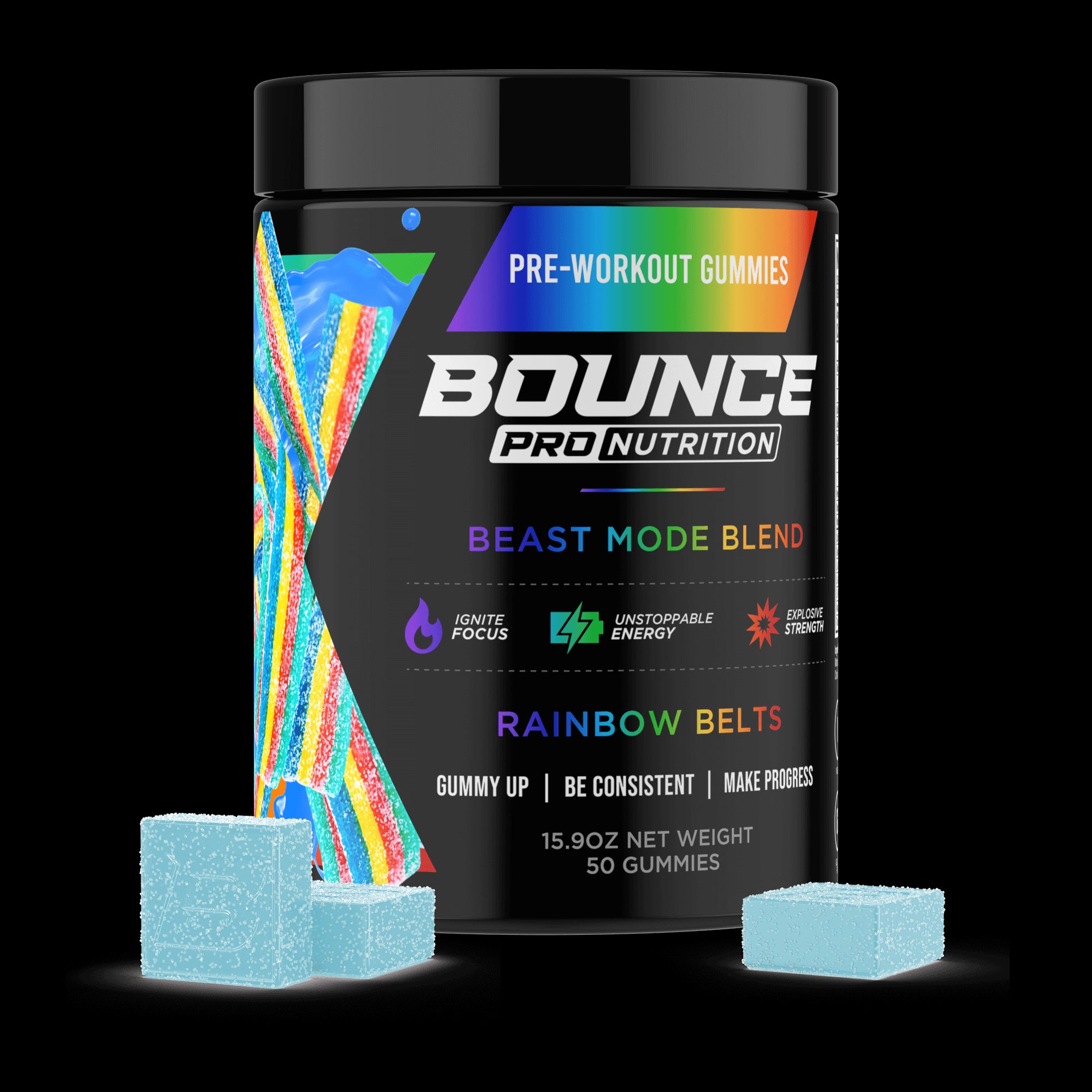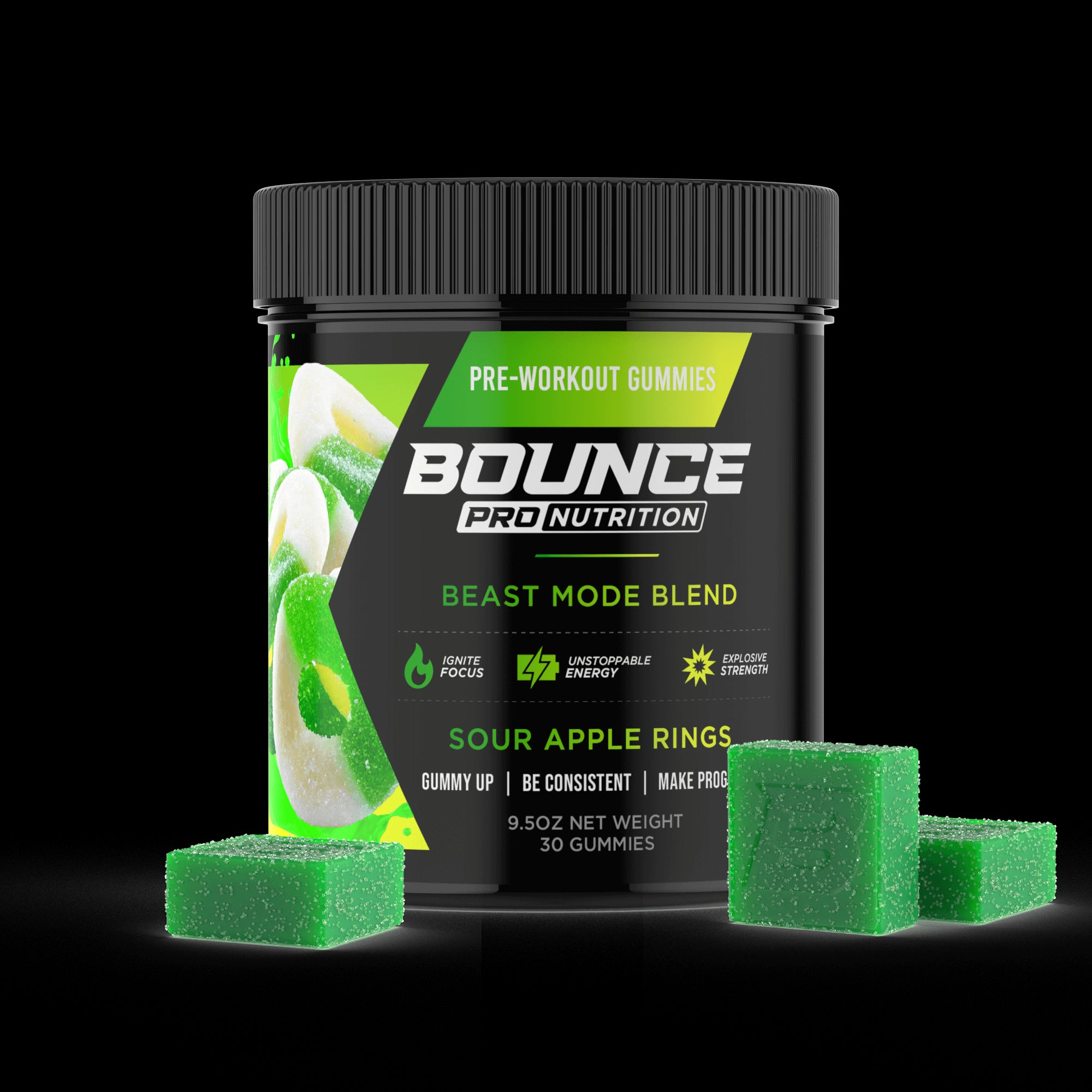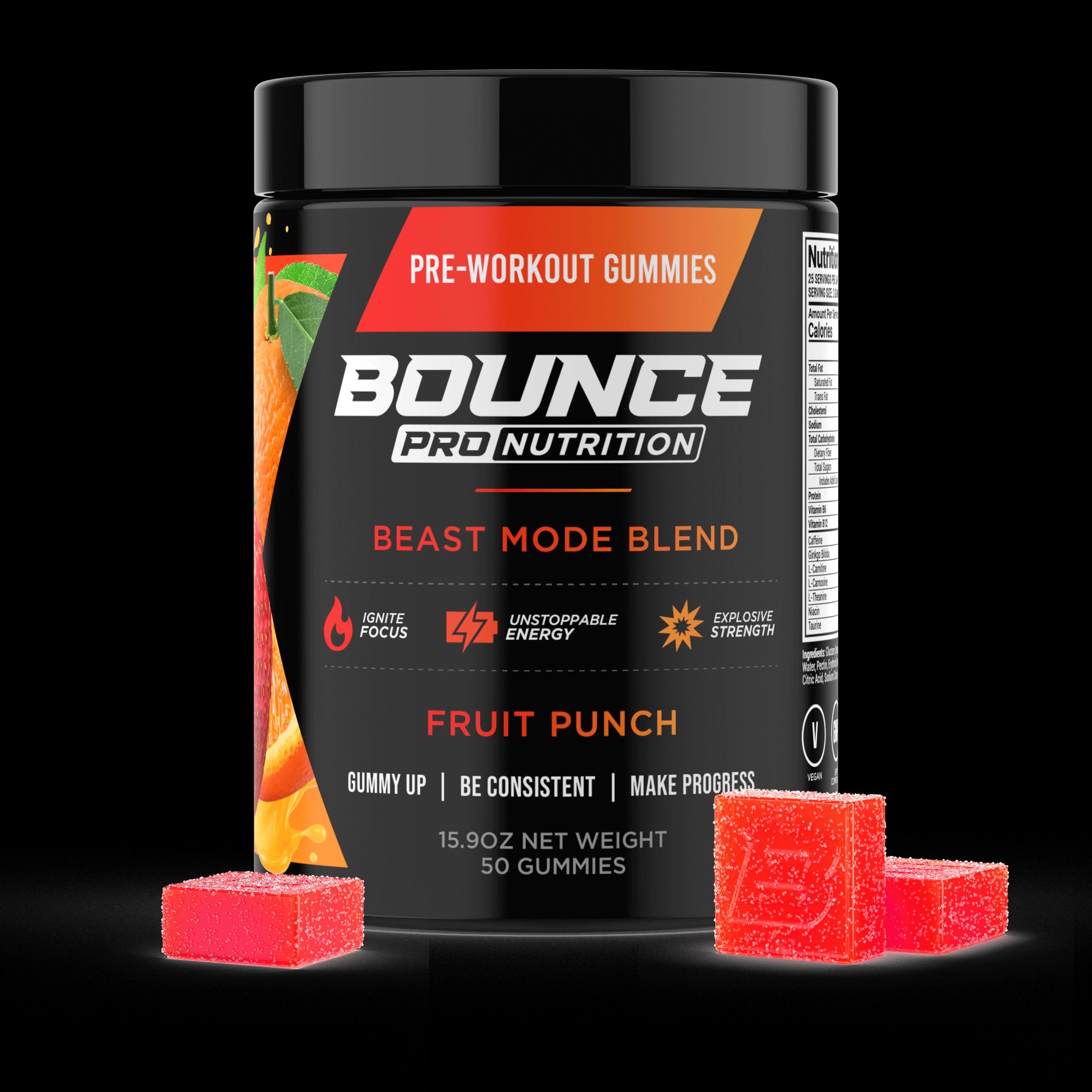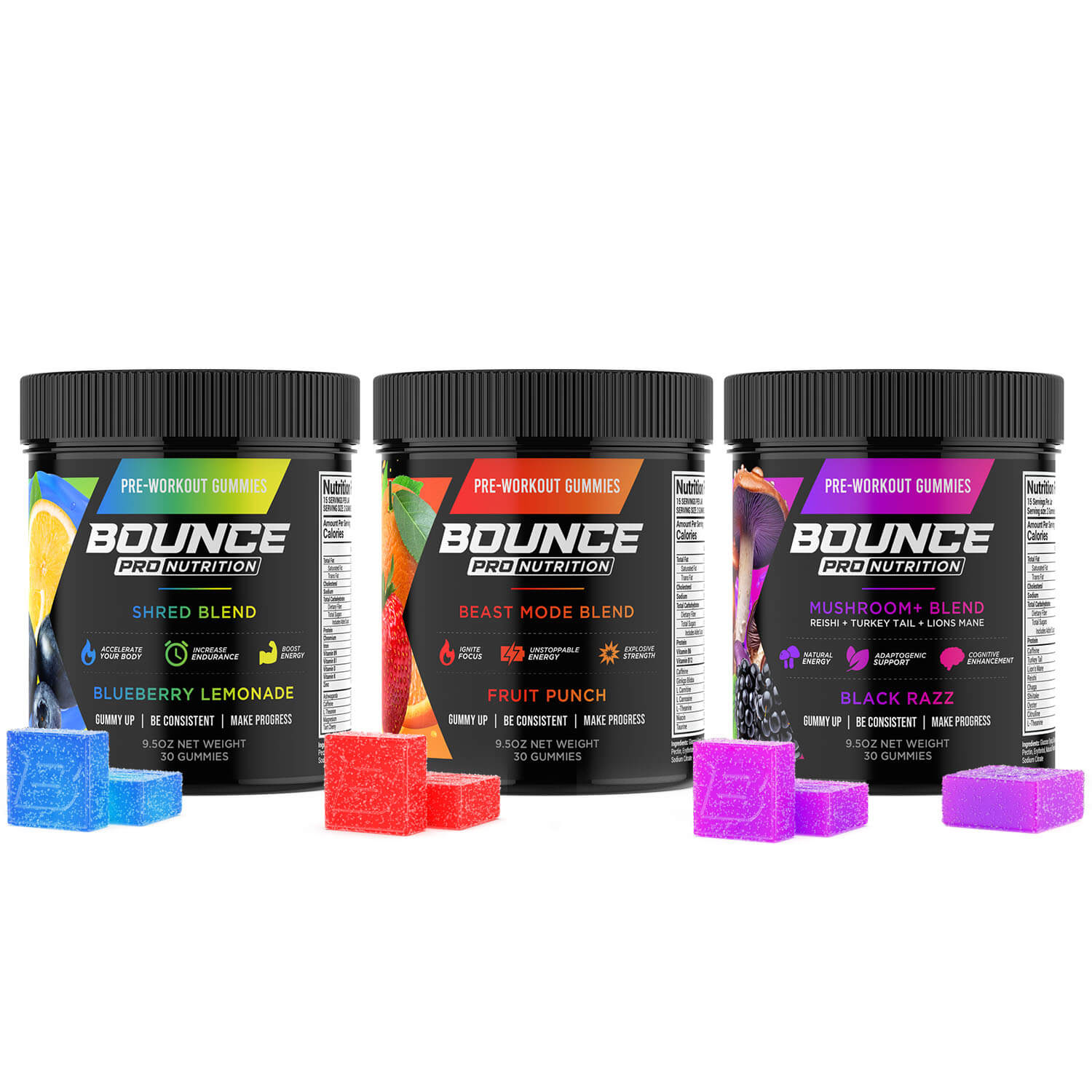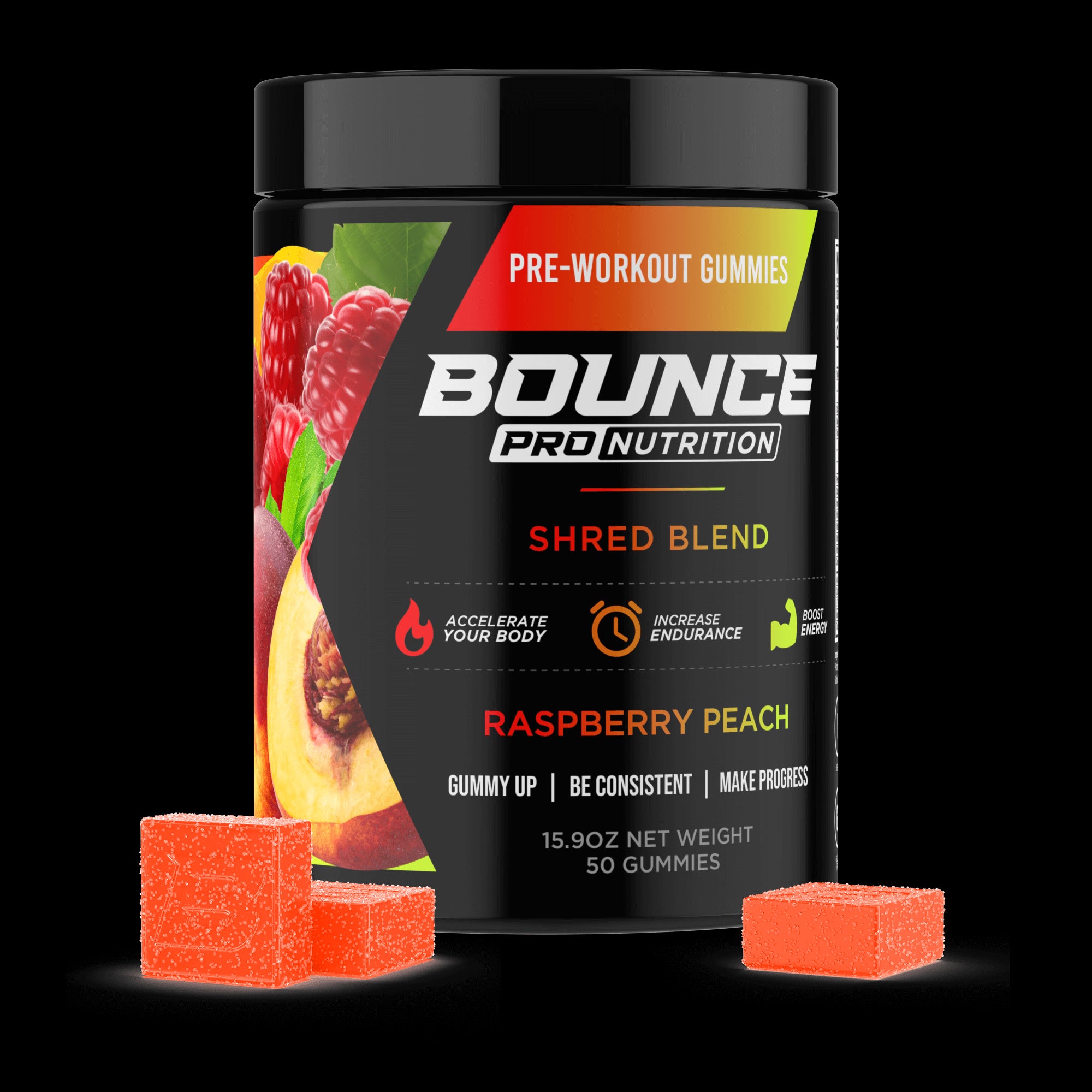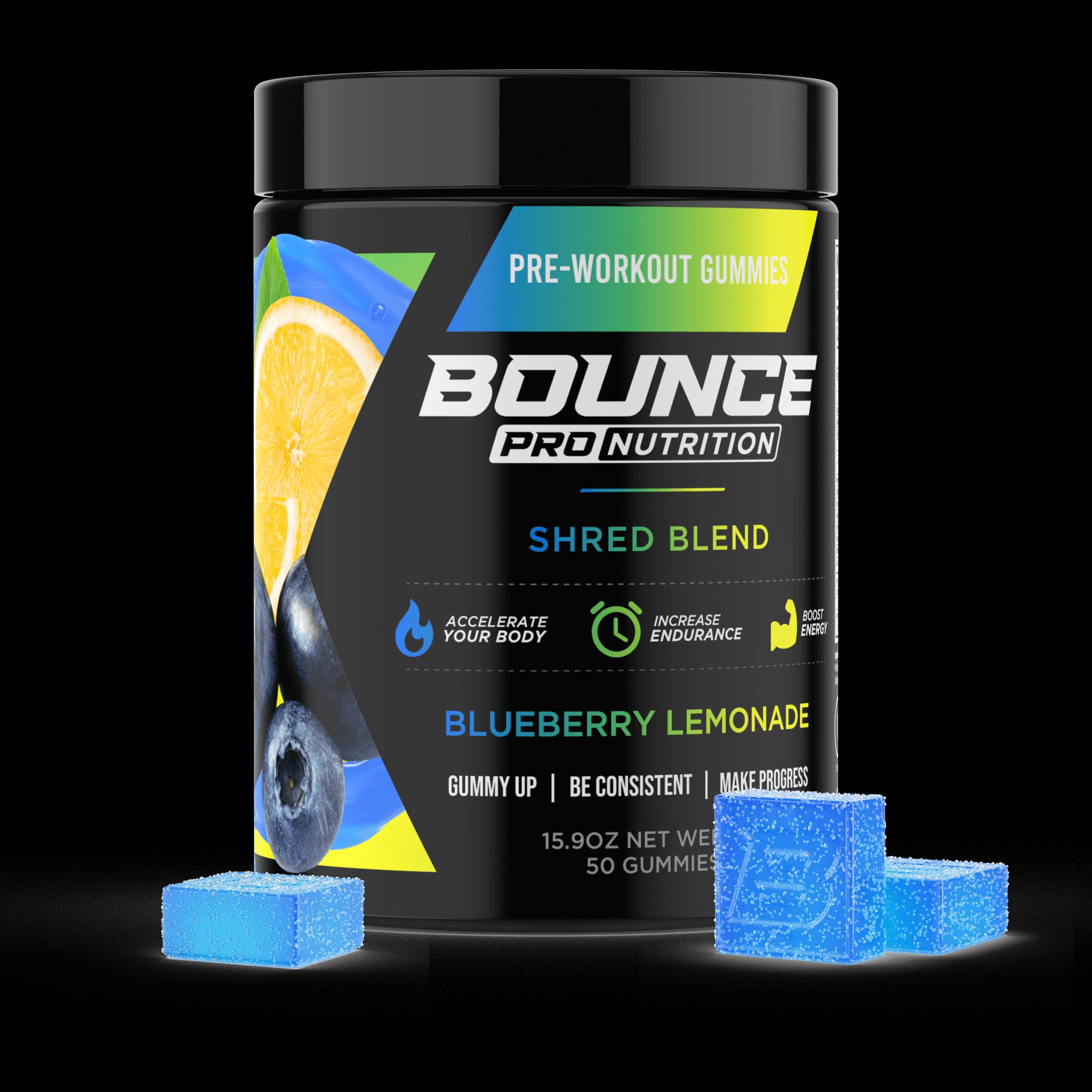There is a select group of individuals who are drawn to the very edges of human experience, who find their truest sense of being alive in moments of intense, heart-pounding, high-stakes action. This is the world of the extreme sports athlete, a realm where the laws of gravity are challenged, the limits of fear are confronted, and the boundaries of what is possible are constantly being rewritten.
It is a world of breathtaking aerial maneuvers, impossibly steep descents, and raw, untamed power. But behind every spectacular stunt and every display of seemingly reckless courage lies a foundation of immense skill, meticulous preparation, and an almost superhuman level of physical and mental control.
The performance of these athletes is not a matter of luck; it is the result of thousands of hours of dedication. In this unforgiving arena, where a split-second mistake can have the ultimate consequence, the athlete's internal physiological state is not just a factor in their performance—it is a critical component of their survival.
TO BUY ELECTROLYTE GUMMIES CLICK HERE
What are Extreme Sports?
At its core, the term "extreme sports" serves as a broad umbrella for a diverse collection of activities characterized by a potent cocktail of high speed, significant height, intense physical exertion, and an inherent element of objective risk. These are not the conventional, rule-bound contests played on manicured fields or courts; they are raw, often unstructured duels with the natural world and the perceived limits of the human body.
Think of the vertical dance of a rock climber scaling a sheer granite cliff, the aerial acrobatics of a freestyle motocross rider launching into the sky, or the turbulent ballet of a kayaker navigating a churning whitewater rapid. What unifies these disparate pursuits is a shared philosophy: a deliberate departure from the ordinary in search of the extraordinary, a commitment to embracing challenge not as an obstacle but as the very medium for expression and growth.
They represent a fundamental rejection of complacency, demanding a unique blend of physical prowess, mental fortitude, and an unwavering passion for the thrill of the moment. The single most defining characteristic of extreme sports is the conscious and calculated engagement with risk. This is a crucial distinction that separates the dedicated athlete from the reckless thrill-seeker. For the uninitiated, launching off a snow-covered cliff on a snowboard might seem like a simple act of abandon, but for the athlete, it is the culmination of years of training, meticulous planning, and an intimate understanding of physics, weather conditions, and personal capabilities.
The risk is not ignored; it is respected, analyzed, and managed. This process of risk mitigation is a discipline in itself, involving everything from checking equipment with obsessive detail to studying terrain and weather patterns, to developing the mental clarity to make split-second decisions under immense pressure. It is this very dance with danger that sharpens the senses, heightens awareness, and ultimately provides the profound sense of accomplishment that participants crave. Conquering a difficult challenge is not just about the physical act; it is about having stared into a void of potential failure and emerging victorious through skill, preparation, and sheer will.
Beyond the adrenaline and the risk, extreme sports place an unparalleled demand on the human body, requiring a level of physical conditioning that is both specialized and holistic. Unlike traditional athletics that might focus on a specific type of fitness, such as the endurance of a marathon runner or the explosive power of a weightlifter, extreme athletes must often cultivate a complex tapestry of physical attributes.
A mountain biker, for instance, needs the cardiovascular endurance to power up steep inclines, the core strength and balance to navigate treacherous descents, the upper body power to control the bike over rocks and roots, and the explosive leg strength for quick maneuvers. Similarly, a surfer requires a powerful core for stability, phenomenal stamina for paddling, and the agility to react to the unpredictable whims of the ocean. This intense, full-body exertion results in significant physiological stress, leading to massive caloric expenditure and, most critically, substantial fluid and electrolyte loss through sweat.
Ultimately, the definition of extreme sports transcends the physical and ventures into the psychological and even the philosophical. These activities are powerful conduits for achieving what psychologist Mihaly Csikszentmihalyi famously termed the "flow state"—a state of complete immersion in an activity, where time seems to distort, self-consciousness vanishes, and performance levels are heightened. In these moments, the athlete and the action become one.
This pursuit of flow is a powerful motivator, offering an escape from the distractions and anxieties of daily life and providing a taste of pure, unadulterated focus. For many, these sports are also a way to forge a deeper, more intimate connection with the natural world. Whether it's feeling the power of a wave, reading the subtle contours of a mountain, or understanding the currents of the air, participants engage with their environment in a way that is primal and profound, fostering a deep respect for the planet that serves as their playground.
In fact, over the past several decades, extreme sports have undergone a remarkable evolution, transforming from niche, counter-cultural pastimes into mainstream, highly commercialized, and globally recognized athletic pursuits. Activities that were once seen as the domain of reckless rebels are now the centerpieces of international competitions like the X Games, with professional athletes who are household names, earning millions of dollars in prize money and sponsorships.
This professionalization has brought with it a new level of scientific rigor to training, preparation, and safety. The modern extreme sports athlete is a dedicated and highly disciplined individual, supported by a team of coaches, nutritionists, and sports psychologists, who all work together to maximize performance and mitigate the inherent risks of their craft, blending the original free-spirited ethos of their sports with the demanding realities of elite athletic competition.
Why Do Some People Choose to Get into Extreme Sports?
The decision to voluntarily step into an environment of high-consequence risk is a fascinating and often misunderstood one, driven by a set of deep-seated psychological motivations that go far beyond a simple desire for a thrill. While the immediate rush of adrenaline is certainly a component, for the truly dedicated enthusiast or professional athlete, the appeal is far more profound.
It is a quest for a state of heightened existence, a way to experience a level of focus, clarity, and engagement that is often absent in the predictable safety of modern daily life. The intense demands of these sports force a practitioner into the absolute present moment, stripping away all extraneous thoughts and worries, leaving only the immediate task at hand. This powerful state of mindfulness is not just an escape; it is a form of deep and meaningful engagement with life itself.
This pursuit of a heightened state of being is often linked to a journey of self-discovery and personal growth. Extreme sports provide a raw and unfiltered mirror for the self. They expose one's weaknesses, test one's resolve, and ultimately, reveal a capacity for courage and resilience that one may have never known they possessed.
The process of learning a new, difficult, and dangerous skill—of progressing from a clumsy novice to a proficient practitioner through a series of small, calculated steps—is an incredibly empowering one. It is a tangible demonstration of one's ability to overcome fear, to manage risk, and to achieve mastery through discipline and perseverance. This builds a unique and unshakable form of self-confidence that is forged in the crucible of real-world consequences. Let’s expand on this a bit further:
-
The Potent Allure of the Adrenaline Rush and the "Flow State": The human body's "fight or flight" response is a powerful one, and the release of adrenaline during a high-risk activity creates a state of heightened senses, increased strength, and a feeling of exhilaration. For many, this adrenaline rush is a powerful and enjoyable experience. More profoundly, however, extreme sports are one of the most reliable pathways to achieving a "flow state." This is a psychological concept describing a state of complete immersion in an activity, where one loses their sense of time and self-consciousness. It is a state of optimal experience and peak performance, and the pursuit of this deeply satisfying and almost transcendent state is a primary driver for many athletes.
-
The Challenge and Catharsis of Mastering Fear: Fear is one of our most primal and powerful emotions. The process of engaging with fear in a controlled and progressive manner, as is done in extreme sports, is a deeply transformative experience. It is not about being fearless, but about learning to acknowledge the fear, respect it, and then act in spite of it. Each time an athlete successfully performs a maneuver that once terrified them, they are effectively re-wiring their own brain, building new pathways of courage and self-trust. This process of fear mastery is incredibly cathartic and builds a level of mental fortitude that is applicable to all of life's challenges.
-
A Powerful Sense of Freedom and Self-Expression: Many extreme sports take place in vast, open, and often beautiful natural environments—the sky, the mountains, the ocean. This provides a profound sense of freedom and escape from the confines and regulations of everyday life. Furthermore, sports like skateboarding, snowboarding, and BMX are not just athletic pursuits; they are also forms of creative self-expression. There is no single "right" way to ride a wave or a skate park. Athletes develop their own unique style, choosing their own lines and tricks, making the sport a form of kinetic art and a powerful expression of their individuality.
-
The Strong Community and Subcultural Bonds: Extreme sports have historically been born out of tight-knit counter-cultures. While they have become more mainstream, this strong sense of community and shared identity remains a core part of the experience. To be a rock climber or a surfer or a skydiver is to be part of a global tribe, a community of people who understand and share your passion. The bonds formed with fellow athletes, who you literally trust with your life in many cases, are incredibly strong. This sense of belonging to a unique subculture is a powerful social draw.
-
The Drive to Push Personal Boundaries: At its heart, the pursuit of extreme sports is a deeply personal journey to discover one's own limits. It is driven by an innate human desire to explore, to progress, and to see what is possible. For the extreme sports athlete, satisfaction comes from constantly pushing their own personal boundaries, whether that means jumping from a slightly higher cliff, landing a more complex trick, or navigating a more challenging line. This constant process of progression and self-transcendence is a powerful and deeply fulfilling life path.
-
The Aesthetic and Creative Dimensions: There is an undeniable beauty and grace in the movements of a skilled extreme sports athlete. The perfect arc of a surfer on a wave, the fluid style of a skateboarder in a bowl, or the silent, soaring flight of a paraglider are all moments of profound aesthetic appeal. Many participants are drawn to the sport not just for the feeling, but for the beauty of the act itself. This is often amplified by the creative pursuits that surround these sports, such as photography and filmmaking, which seek to capture and share these moments of kinetic art.
What Does it Take Then to Become an Extreme Sports Athlete or Simply an Enthusiast?
The journey into the world of extreme sports, whether as a casual enthusiast or an aspiring professional, is one that must be undertaken with a deep sense of respect, patience, and methodical preparation. The spectacular performances seen in videos and competitions are not the result of reckless abandon but are the culmination of years of dedicated practice and a systematic approach to skill acquisition and risk management. To the outside observer, these sports may look like a chaotic dance with danger, but to the practitioner, it is a highly calculated and disciplined craft. Becoming proficient and, most importantly, safe in any of these high-consequence activities requires a holistic commitment that encompasses the body, the mind, and a deep understanding of one's equipment and environment, specifically:
-
A Solid Foundation of General Physical Fitness: Before one can even begin to learn the specific skills of an extreme sport, they must possess a solid baseline of physical fitness. This includes cardiovascular endurance to handle the exertion and recover quickly, functional strength to control the body and absorb impacts, and core stability to provide a solid platform for all dynamic movements. A rock climber needs immense upper body and grip strength, a snowboarder needs powerful legs and a strong core, and a surfer needs exceptional paddling endurance. This foundational fitness is the non-negotiable entry ticket.
-
A Methodical and Progressive Approach to Skill Acquisition: This is the most critical element for long-term safety and success. No one starts by jumping off a cliff or dropping into a 50-foot wave. An extreme sports athlete learns their craft through a slow, patient, and methodical progression. A skydiver starts with tandem jumps, then progresses through a structured student program. A mountain biker starts on easy green trails before ever attempting a black diamond descent. This step-by-step approach allows the athlete to build skills, confidence, and judgment in a low-risk environment before gradually increasing the challenge.
-
Mastery of Specialized Equipment: In most extreme sports, the athlete's equipment is a life-sustaining tool. Therefore, a deep and intimate understanding of this gear is essential. A skydiver must know how to inspect and pack their own parachute. A rock climber must understand the proper use and limitations of their ropes, harness, and protection pieces. A mountain biker must know how to maintain their brakes and suspension. This mastery of one's equipment is a critical component of safety and self-reliance.
-
Profound Mental Fortitude and Risk Management: As discussed, the mental game is paramount. An athlete must cultivate the ability to stay calm, focused, and analytical under extreme pressure. This is not about eliminating risk, but about learning to accurately assess and manage it. It involves knowing when the conditions are right, when your skills are sufficient for the challenge, and, most importantly, having the discipline and humility to walk away when the risk is too high. A good extreme sports athlete is an expert risk manager.
-
A Deep Respect for the Environment: Most extreme sports take place in spectacular natural environments, and a core tenet of the culture is a deep respect for these places. A surfer learns to read the ocean, a snowboarder learns to understand snowpack and avalanche danger, and a climber learns to move gracefully on the rock without damaging it. This intimate connection with their chosen environment is a key part of the experience and fosters a strong sense of environmental stewardship.
-
Finding Mentors and a Supportive Community: While many of these sports are individual pursuits, they are almost always learned within a community. Finding experienced mentors and a supportive group of peers is crucial for safe progression. More experienced athletes can provide invaluable guidance, share their knowledge, and provide a crucial safety net during the learning process. This community aspect is not just helpful; it is often essential for navigating the complexities and risks of the sport.
Types of Extreme Sports Athletes Based on Level
The community of extreme sports is not a monolith; it is a spectrum of participation that ranges from the casual weekend enthusiast to the elite, full-time professional. The level at which an individual participates is defined by their goals, their time commitment, their skill level, and their relationship with the financial and competitive aspects of the sport. Understanding this spectrum is key to appreciating the different ways people engage with these high-adrenaline activities:
-
Recreational Extreme Sports Athletes: This group forms the vast and passionate base of the extreme sports world. These are the "weekend warriors" and dedicated enthusiasts who have full-time jobs and responsibilities but structure their free time around their chosen sport. Their motivation is primarily intrinsic: the love of the activity, the personal challenge, the sense of community, and the connection with nature. They may spend a significant amount of their disposable income on gear and travel, but they are not playing for prize money. Their reward is the experience itself. This is the individual who drives to the mountains every weekend in the winter to snowboard or who spends their summer evenings at the local rock climbing gym. They are the heart and soul of the community.
-
Competitive Extreme Sports Athletes: This category includes athletes who have progressed beyond purely recreational participation and now compete in organized events. This is a broad group that includes both amateurs and semi-professionals. They follow structured training plans, often work with coaches, and are focused on achieving specific competitive results. This could be a local amateur downhill mountain bike racer, a regional surfing competitor, or a freestyle skier trying to make a name for themselves on a qualifying tour. They are deeply dedicated and are driven by the thrill of competition and the desire to test their skills against their peers. While they may win some prize money, it is typically not enough to make a full-time living from the sport.
-
Professional Extreme Sports Athletes: This is the very pinnacle of the sport, a small and elite group of individuals who are able to make a full-time career out of their passion. These athletes are defined by their extraordinary talent, their unwavering dedication, and their ability to perform at the highest level under immense pressure. They typically earn their living through a combination of contest winnings, major sponsorship deals with endemic and non-endemic brands, and by creating media content that showcases their skills. Their lives are a demanding cycle of training, travel, competition, and content creation. They are the innovators and the icons who push the boundaries of what is possible and inspire the next generation of athletes.
Extreme Sports by Category
The world of extreme sports is a vast and ever-expanding universe of human endeavor, categorized by the environment in which the activity takes place. Each domain—land, water, air, and ice—presents its own unique set of physical laws, challenges, and opportunities for adventure. An athlete's chosen category often reflects a deep personal connection to that specific element. The skills required to navigate a churning river are vastly different from those needed to soar through the air or descend a snowy peak, yet all are united by a common thread of courage, skill, and a profound respect for the power of nature.
Land-based Extreme Sports
This is perhaps the most diverse and accessible category, encompassing a wide range of activities that use the solid ground as their playground. These sports often involve wheels, boards, or the human body itself interacting with both natural and man-made terrain Land-based sports often require an exceptional sense of balance, explosive power, and the resilience to handle high-impact forces. Essentially, these athletes learn to read the ground with an almost tactile intuition, making split-second adjustments to maintain control and execute complex maneuvers.
-
Skateboarding: An iconic action sport with deep counter-cultural roots, skateboarding involves riding and performing tricks on a skateboard. It has numerous sub-disciplines, including street skating (using urban obstacles), vert skating (on a large half-pipe), and park skating (in purpose-built skateparks). It requires incredible balance, coordination, and the tenacity to endure countless falls while mastering a trick.
-
Mountain Boarding: Also known as dirtboarding, this sport is essentially snowboarding on land. Athletes ride a larger, more robust version of a skateboard with large pneumatic tires and bindings, allowing them to descend grassy hills, dirt tracks, and mountain bike trails. It's a thrilling way to experience the sensation of snowboarding in the summer months.
-
Sandboarding: Similar to snowboarding, sandboarding is the sport of riding down a sand dune while standing on a board. It is popular in desert and coastal areas with large dunes. The friction of the sand makes it a different challenge than snowboarding, but it offers a unique and exhilarating experience in a stunning environment.
-
Aggressive Inline Skating: This is a highly acrobatic form of rollerblading that focuses on grinds, airs, and other complex tricks performed on street obstacles or in skateparks. Athletes use specialized, durable skates and must possess a high degree of balance, power, and creativity.
-
Mountain Biking (Downhill/Freeride): In its most extreme forms, mountain biking involves descending steep, technical, and often treacherous terrain at high speed (Downhill) or performing large jumps and tricks on man-made features (Freeride). It requires incredible bike handling skills, nerve, and the physical strength to absorb massive impacts.
-
BMX (Freestyle/Racing): Bicycle Motocross has two main extreme forms. Freestyle BMX involves performing acrobatic tricks on ramps, in skateparks, or on street obstacles. BMX racing is an explosive sprint on a dirt track with large jumps. Both require immense power, skill, and courage.
-
Motocross (Freestyle/Racing): Motocross involves racing powerful motorcycles on off-road circuits. Freestyle Motocross (FMX) takes this to another level, with athletes performing seemingly impossible aerial tricks and backflips off massive ramps, demanding a unique combination of throttle control and acrobatic skill.
-
ATV Off-Roading: All-Terrain Vehicle (ATV) off-roading, particularly in its racing forms, is a high-speed, high-impact sport. Athletes navigate rugged terrain, jumps, and tight corners on four-wheeled vehicles, requiring significant physical strength to control the machine and absorb the constant jolts.
-
Rock Climbing (Bouldering/Sport/Trad): This sport involves ascending rock faces using only one's hands and feet. Bouldering is done on short, difficult "problems" without ropes. Sport climbing involves clipping into pre-placed bolts for safety. Traditional ("Trad") climbing requires the climber to place their own removable protection. All forms demand incredible strength-to-weight ratio, flexibility, and intense problem-solving skills.
-
Parkour: Developed from military obstacle course training, parkour is the art of moving from one point to another in a complex environment in the fastest and most efficient way possible. Practitioners, known as "traceurs," use running, climbing, swinging, vaulting, and jumping to overcome any obstacles in their path. It requires incredible functional strength, agility, and spatial awareness.
-
Canyoning (Canyoneering): This adventure sport involves traveling down canyons using a variety of techniques that may include walking, scrambling, climbing, jumping, abseiling (rappelling), and swimming. It is a challenging, multi-skilled discipline that requires both physical fitness and technical rope skills to navigate the aquatic and vertical environment.
-
Obstacle Course Racing (OCR): OCR involves running a long-distance course that is interspersed with a variety of physically demanding obstacles. These can include climbing walls, carrying heavy objects, crawling under barbed wire, and traversing monkey bars. It is a grueling test of both endurance and full-body functional strength.
-
Paintball (Speedball): In its competitive form, known as speedball, paintball is a fast-paced, high-intensity team sport. Players compete on a small field with inflatable bunkers, requiring explosive sprinting, diving, and tactical communication. It is a demanding anaerobic workout played under the stress of being shot with paint projectiles.
-
Pole Vaulting: While a traditional track and field event, pole vaulting is often considered an extreme sport due to its combination of speed, gymnastic ability, and the inherent risk of launching oneself over 15-20 feet into the air using a flexible pole. It requires a rare and incredible blend of athletic talents.
Water-based Extreme Sports
The power and unpredictability of water provide a dynamic and challenging playground for a wide range of extreme sports. These activities often require a unique feel for the water, a strong core, and a deep respect for the power of the ocean, rivers, and lakes:
-
Surfing (Big Wave): In its most extreme form, big wave surfing involves riding waves that can be over 20, 50, or even 100 feet high. It is one of the most dangerous sports in the world, requiring not only incredible skill and balance but also the lung capacity and composure to survive a violent wipeout and being held underwater by an immense volume of water.
-
Kitesurfing (Kiteboarding): This sport combines aspects of wakeboarding, surfing, and paragliding. The rider stands on a small surfboard or a board with bindings and is propelled across the water by a large, powerful kite. Skilled riders can perform massive aerial jumps, sometimes reaching heights of over 50 feet, and a variety of acrobatic tricks.
-
Whitewater Rafting/Kayaking: This involves navigating challenging and turbulent river rapids in an inflatable raft or a kayak. It is a thrilling and demanding sport that requires teamwork (in a raft), technical paddling skills, the ability to read the river's currents, and the composure to handle a capsize in powerful whitewater.
-
Jet Skiing (Freestyle): While recreational jet skiing is a popular pastime, freestyle jet skiing is an acrobatic extreme sport. Athletes use powerful, modified personal watercraft to perform a variety of tricks, including backflips, barrel rolls, and submarines, requiring significant strength and coordination to manipulate the machine.
-
Flyboarding/Jetboarding: A relatively new water sport, flyboarding uses a device that is connected by a long hose to a personal watercraft. The water pressure from the jet ski is redirected to the flyboard, which propels the rider up to 50 feet into the air, allowing them to perform a variety of acrobatic maneuvers that resemble something out of a superhero movie.
-
Jet Boating: This involves high-speed boating in shallow, rocky rivers. Jet boats use a unique propulsion system that allows them to operate in just a few inches of water and to perform thrilling, high-speed 360-degree spins. It is a high-adrenaline and high-skill form of boating.
-
Cave Diving: One of the most dangerous and technical forms of scuba diving, cave diving involves exploring submerged cave systems. It requires an extremely high level of training, specialized equipment configurations, and an unshakable, calm mindset, as there is no direct, vertical ascent to the surface in an emergency.
Air-based Extreme Sports
These sports are defined by their interaction with the sky, offering the ultimate feeling of freedom and the purest confrontation with gravity. They require a deep understanding of aerodynamics, weather, and a meticulous approach to safety and equipment. Not only that, but the mental challenges are profound, requiring participants to overcome the primal fear of falling and maintain absolute composure and clarity of thought while thousands of feet above the ground. The reward is an unparalleled perspective of the world and the exhilarating sensation of three-dimensional movement:
-
Skydiving: The classic air sport, skydiving involves jumping out of an aircraft and experiencing a period of freefall before deploying a parachute to land safely on the ground. Advanced disciplines include formation skydiving, wingsuit flying (where a webbed suit allows for incredible horizontal flight), and canopy piloting (swooping), which involves high-speed, acrobatic parachute landings.
-
BASE Jumping: BASE is an acronym for Building, Antenna, Span, and Earth (cliffs), the four categories of fixed objects from which a BASE jumper will leap. It is one of the most dangerous sports in the world due to the low altitudes and the close proximity to the object, leaving virtually no margin for error in deploying the parachute.
-
Paragliding: A paraglider is a free-flying, foot-launched glider aircraft with no rigid primary structure. The pilot sits in a harness suspended below a fabric wing. Paragliders can stay aloft for hours, using thermal updrafts to gain altitude and cover long distances. It is a serene and beautiful way to experience flight.
-
Hang Gliding: Similar to paragliding, hang gliding is another foot-launched air sport. However, the hang glider is a more rigid, triangular wing structure, and the pilot flies in a prone position. Hang gliders are typically able to fly faster and in stronger wind conditions than paragliders.
Ice/Snow-based Extreme Sports
When temperatures drop and precipitation turns to white, a whole new world of extreme sports emerges. These activities take place on frozen landscapes. They require athletes to master the unique physics of sliding on low-friction surfaces and to contend with the challenges of cold weather. Balance, edge control, and the ability to adapt to variable snow and ice conditions are paramount. Furthermore, participants must be skilled in cold-weather survival and aware of mountain-specific hazards, making this category as much about knowledge and preparation as it is about physical skill.
-
Snowboarding (Big Air/Backcountry): In its extreme forms, snowboarding involves either launching off massive man-made jumps to perform complex aerial tricks (Big Air) or riding down steep, ungroomed, and often dangerous mountain terrain in the backcountry. Backcountry snowboarding requires a deep knowledge of avalanche safety.
-
Sledding/Tobogganing (Luge/Skeleton): In their Olympic forms, these are high-speed, high-risk ice sports. Athletes slide down a narrow, twisting, and banked ice track on a small sled, reaching speeds of over 80-90 miles per hour, all while navigating the course with subtle body movements.
-
Snow Tubing: While often seen as a casual family activity, in its more extreme, non-commercial forms, it can involve high speeds and jumps, making it a thrilling and risky pursuit.
-
Ice Climbing: This sport involves ascending frozen waterfalls, icefalls, and ice-covered rock slabs using specialized equipment like ice axes and crampons. It is a physically demanding and technical sport that requires immense strength, precision, and the ability to stay calm in a cold and precarious environment.
-
Heli-Skiing/Heli-Snowboarding: This is the ultimate dream for many skiers and snowboarders. It involves using a helicopter to access remote, untouched, and often extremely steep and challenging terrain in the backcountry. It offers the thrill of riding pristine powder but also carries the significant risks associated with avalanches and remote wilderness travel.
Why is Staying Hydrated Imperative When Doing Extreme Sports?
In the high-stakes, high-consequence world of extreme sports, where the margin for error is razor-thin, an athlete's physiological state is a critical and non-negotiable component of their safety and performance. Proper hydration is not simply about comfort or staving off thirst; it is a fundamental pillar of the risk management strategy that every skilled practitioner employs.
The intense physical exertion, combined with the profound psychological stress and adrenaline release that define these activities, can lead to surprisingly high rates of fluid and electrolyte loss. When an athlete's hydration status is compromised, it triggers a cascade of negative effects that can severely impair the very faculties they rely on to survive: their judgment, their reaction time, their strength, and their coordination.
In a world where a split-second decision can be the difference between a successful landing and a catastrophic failure, maintaining optimal hydration is an absolute necessity. Let’s explore this a bit further here:
-
Maintaining Cognitive Function for Split-Second Decision-Making: This is the single most important reason for an extreme sports athlete to stay hydrated. The brain is extremely sensitive to dehydration. Even a mild fluid deficit can significantly impair critical cognitive functions like judgment, focus, and short-term memory. A dehydrated BASE jumper might make a poor calculation about their exit point. A dehydrated kayaker might misread a dangerous hydraulic in a rapid. A dehydrated rock climber might forget to properly secure their protection. In these environments, such a mental lapse can be fatal. Proper hydration is essential for keeping the brain sharp and the decision-making process flawless.
-
Enhancing Reaction Time and Neuromuscular Reflexes: Extreme sports demand lightning-fast reflexes. The ability to react instantly to a sudden wind gust, a shifting patch of snow, or an unexpected obstacle is crucial. Dehydration slows down the speed of neural transmission from the brain to the muscles. This leads to a measurable decrease in reaction time and a dulling of the body's reflexive responses. Staying optimally hydrated helps to ensure that the entire nervous system is firing at its maximum possible speed, keeping the athlete's reflexes as sharp as possible.
-
Sustaining Muscular Endurance and Explosive Power: Whether it's paddling through a long rapid, climbing a difficult rock face, or absorbing the landing from a large jump, these sports are incredibly physically demanding. Dehydrated muscles are weak and inefficient muscles. A lack of fluid reduces blood flow, impairs the delivery of fuel and oxygen, and hinders the muscle's ability to contract with maximal force. This leads to a rapid onset of fatigue, a loss of explosive power, and a decrease in muscular endurance, which can make it impossible to perform the required movements or to hold on when it matters most.
-
Preventing Debilitating Cramps at Critical Moments: The intense muscular exertion of extreme sports, combined with the significant loss of electrolytes like sodium and magnesium through sweat, creates a perfect storm for debilitating muscle cramps. A sudden, paralyzing cramp in a forearm while rock climbing, in a calf while surfing, or in a leg while skydiving could be absolutely catastrophic. It can make it impossible to hold on, to maintain control, or to perform the necessary safety procedures. Maintaining proper fluid and electrolyte balance is a critical defense against these dangerous and performance-ending spasms.
-
Regulating Core Temperature Under Extreme Stress: The adrenaline and intense physical effort of extreme sports can generate a huge amount of internal heat, even in cold environments. The body's primary cooling mechanism is sweating. If an athlete becomes dehydrated, their body's ability to sweat and cool itself is compromised, which can lead to a dangerous rise in core body temperature. This can accelerate fatigue and, in hot environments like a skate park or a desert canyon on a summer day, can quickly lead to heat exhaustion, a condition that severely impairs judgment and physical ability.
-
Improving Durability and Reducing the Risk of Injury: A well-hydrated body is a more resilient body. The muscles, tendons, ligaments, and even the cartilage in our joints are all highly aqueous tissues. When they are dehydrated, they become less pliable and more susceptible to strains, sprains, and tears from the high-impact forces and awkward movements that are common in these sports. By maintaining proper hydration, an athlete is helping to keep all of their musculoskeletal tissues healthier and more resilient, which can play a significant role in long-term injury prevention.
Why Do Some Extreme Sports Athletes/Enthusiasts Also Use Supplements?
In the demanding and high-consequence world of extreme sports, athletes are constantly seeking ways to optimize their performance, accelerate their recovery, and manage the immense physical and mental stresses of their craft. While a foundation of a whole-food diet is crucial, the unique and often extreme demands of their sports—from all-day sessions in remote locations to the need for split-second cognitive function—can create specific nutritional needs that are difficult to meet with meals alone.
It is to fill these specific gaps that many serious extreme sports athletes and enthusiasts strategically incorporate dietary supplements into their regimen. These are not seen as a replacement for skill or courage, but as targeted, science-backed tools to help them push their limits safely and recover more effectively from their grueling pursuits. Let’s break it down further:
-
Aiding in Hydration and Electrolyte Balance: This is a primary and critical use of supplements in extreme sports. As we've discussed, the combination of physical exertion and high adrenaline can lead to significant sweat loss. In remote environments like a mountain trail or a surf break, carrying large volumes of fluid is impractical. Electrolyte supplements, especially in lightweight and convenient forms like powders or gummies, are essential. They help the body to absorb and retain the water that is consumed more effectively and replace the critical minerals needed to prevent cramps and maintain neural function, making them a vital piece of safety gear.
-
Sustaining Energy for Long, Demanding Sessions: Many extreme sports involve being out for many hours at a time—an all-day rock climbing session, a backcountry snowboarding tour, or a long mountain bike ride. It is impossible to carry enough "real" food to fuel these long efforts without a very heavy pack. This is where calorie-dense and easily digestible supplements like energy gels, chews, and bars become indispensable. They provide a lightweight and efficient source of carbohydrates to keep blood sugar stable and prevent the energy crash or "bonk" that can be dangerous in a remote setting.
-
Enhancing Mental Focus, Alertness, and Calm: The cognitive demands of extreme sports are astronomical. An athlete needs unwavering focus and lightning-fast decision-making. Many will use supplements known as nootropics to support this. Caffeine is the most common, used for its ability to increase alertness and reduce the perception of fatigue. L-theanine is also extremely popular, often paired with caffeine, as it can promote a state of "calm focus," which is ideal for managing the high-stress, high-anxiety moments that are inherent in these sports.
-
Accelerating Recovery from High-Impact Activities: Extreme sports are notoriously tough on the body. The high-impact landings in skateboarding or snowboarding and the intense muscular strain of climbing create significant muscle damage. To speed up the recovery process, many athletes use protein supplements. A convenient whey or plant-based protein shake after a session delivers the amino acids needed to begin repairing and rebuilding muscle tissue. Other supplements like tart cherry juice are also used to help manage the significant inflammation and muscle soreness that follows a hard day.
-
Supporting Long-Term Joint Health: The repetitive impacts and high-torque movements of many extreme sports can take a serious toll on the joints over a long career. To support the health of their cartilage, tendons, and ligaments, many athletes will proactively use supplements like hydrolyzed collagen, glucosamine, and chondroitin. Omega-3 fatty acids are also a staple for their powerful anti-inflammatory effects, which can help to manage the chronic joint aches and pains associated with these activities.
-
The Sheer Convenience for Remote and Difficult Environments: Practicality is key when you are halfway up a mountain or deep in the backcountry. Supplements are often far more convenient, portable, and durable than whole foods. A gummy or a gel can be consumed with one hand while on the move. A powder can be quickly mixed in a water bottle. They don't spoil easily and are incredibly lightweight and packable, making them the perfect nutritional solution for environments where convenience and weight are major concerns.
-
Boosting the Immune System: The combination of intense physical stress, travel, and exposure to varying climates can weaken an extreme sports athlete's immune system, making them more susceptible to illness. Getting sick can mean missing a key weather window or a competition. To stay healthy, many will use supplements like Vitamin C, Vitamin D, and Zinc to provide extra support to their immune system, especially during periods of heavy travel or training.
-
Pre-Activity Priming for Peak Performance: Before dropping into a big line or attempting a new trick, an athlete wants to feel 100% physically and mentally ready. Many will use a pre-activity supplement to help them get in the zone. This might include caffeine for alertness, beta-alanine to buffer muscle fatigue during a long, strenuous effort, and L-citrulline to support blood flow and the "pump" that can help with muscular endurance.
-
Managing the Adrenaline Response and Aiding Sleep: While the adrenaline rush is part of the appeal, the lingering effects can make it difficult to "come down" and get the quality sleep needed for recovery. Some athletes use calming supplements in the evening to help manage this. Magnesium is a popular choice for its role in muscle relaxation and calming the nervous system. L-theanine can also be used to promote a state of relaxation, helping an athlete to wind down and get the restorative sleep that is essential for both physical and mental recovery.
-
Filling Nutritional Gaps from a Travel-Heavy Lifestyle: Professional and serious amateur extreme sports athletes often live a nomadic lifestyle, traveling constantly in search of the best conditions, competitions, or locations. This can make it very difficult to maintain a consistently healthy diet. A high-quality multivitamin and a greens powder can act as a form of "nutritional insurance," helping to fill in any gaps and ensuring their bodies get the foundational vitamins and minerals they need to perform at their best, no matter where they are in the world.
Those Fueling Edibles Known as Electrolyte Gummies
In the high-stakes and often remote environments of extreme sports, where every ounce of gear is scrutinized and every nutritional choice can have a direct impact on performance and safety, electrolyte gummies have emerged as a brilliantly designed and incredibly practical fueling solution. They represent a significant evolution in on-the-go nutrition, offering a convenient, mess-free, and palatable alternative to the traditional options of powders that require mixing in precious water and sticky gels that can be difficult to handle.
These small, chewable supplements are scientifically formulated to deliver a concentrated and easily absorbable dose of the two most critical components for an extreme sports athlete: essential minerals known as electrolytes, and in most cases, quick-digesting carbohydrates for immediate and sustained energy. Their entire design philosophy is centered around rapid digestion, portability, and supreme ease of use, enabling an athlete hanging from a cliff face or preparing for a skydive to quickly refuel without any fuss.
To fully comprehend the immense value that electrolyte gummies offer an extreme sports athlete, one must first have a solid understanding of what electrolytes are and the mission-critical role they play in the body during periods of intense physical and mental stress. Electrolytes are not complex, man-made compounds; they are essential minerals, such as sodium (Na+), potassium (K+), magnesium (Mg2+), and calcium (Ca2+), that’re vital for human life and are naturally found in our food.
When these minerals are dissolved in the body's fluids, like blood or sweat, they carry a small but vital electric charge. This electrical capability is the very foundation of our nervous system and the entire process of muscle function. Every single nerve impulse—from the brain's split-second decision to adjust a snowboard's edge, to the powerful contraction of the forearm muscles to grip a rock hold—is a complex electrical event mediated by the lightning-fast exchange of sodium and potassium ions across the nerve cell membrane.
When an athlete sweats from exertion and the stress of a high-risk situation, they lose these vital minerals, and if they are not replaced, this entire elegant system of communication and contraction begins to fail. The process of creating a shelf-stable, effective, and tasty electrolyte gummy is a sophisticated endeavor that perfectly merges the disciplines of food science with the precision of sports nutrition. It is a carefully controlled industrial process designed with the specific goal of ensuring that every single gummy an athlete consumes delivers a consistent and reliable nutritional payload.
High-quality manufacturers often employ specific techniques, such as using low heat during the cooking process, with the intention of preserving the potency and integrity of the delicate vitamins and other ingredients, ensuring the athlete gets the maximum benefit from what they are consuming. The journey from a collection of raw powders to the finished, chewable product that an athlete can easily stash in a pocket or a harness generally follows a well-established, multi-stage pathway:
-
Scientific Formulation and Raw Ingredient Compounding: The entire process originates not on a production line, but in a laboratory where food scientists and sports nutritionists design the gummy's specific formula. They carefully select and precisely weigh all the raw ingredients. This includes the mineral salts that will provide the electrolytes (e.g., sodium citrate, potassium chloride), the specific carbohydrate sources that will provide fast energy (often a strategic blend of glucose and fructose to utilize multiple absorption pathways in the gut), and the gelling agent, which is typically plant-based pectin for vegan-friendly products or traditional animal-based gelatin. Other minor ingredients like citric acid (for tartness and preservation) and carefully selected natural flavors and colors are also added to the pre-mix.
-
Industrial Cooking of the Gummy Slurry: The precisely weighed and compounded ingredients are then transferred into a massive, jacketed industrial kettle for the cooking process. Inside this cooker, the mixture is heated to a very specific temperature for a set amount of time. This critical step serves to fully dissolve all the solid ingredients into the liquid base, creating a perfectly uniform and viscous liquid known as a slurry. This cooking process is meticulously controlled by computers and experienced technicians to achieve the exact moisture content and solid-to-liquid ratio (a measure known as Brix) that is required for the electrolyte gummy to have its desired final texture and chewiness.
-
Precision Depositing of the Slurry into Molds: Once the slurry has been cooked to the exact specifications, it is then piped from the large cooker to a complex piece of machinery called a depositor. This machine functions like a series of hundreds of computer-controlled, precise nozzles that work in perfect unison to inject the hot liquid gummy mixture into thousands of individual molds. These molds are often made of flexible, food-grade silicone or, in more traditional and larger-scale methods, are impressions that have been machine-stamped into large trays that are filled with fine, food-grade corn starch.
-
Controlled Curing and Setting of the Gummies: After being filled, the trays of molds are then carefully moved into long, climate-controlled rooms or tunnels. They remain in this controlled environment for an extended period, which can range from 24 to as long as 72 hours, in a process known as curing or stoving. During this crucial resting phase, the gelling agent (pectin or gelatin) fully sets up, and a specific amount of excess moisture is allowed to evaporate from the gummies. This is the step that allows them to firm up and achieve their final, stable, and characteristic chewy texture.
-
Demolding and Finishing Touches: After the curing process is complete, the gummies are ready to be removed from their molds. They are then often passed through a large, slowly rotating tumbling drum. Inside this drum, they are very lightly coated with a food-grade, edible wax (like carnauba wax) or a light oil. This finishing step serves the practical purpose of preventing the finished gummies from sticking together in the final packaging and gives them a pleasant, shiny appearance. In some cases, for added flavor and texture, they might be coated in a sweet or sour sugar-acid crystal mixture.
-
Rigorous Quality Control and Final Packaging: Before a single gummy can be sent to an athlete, the finished product must undergo a battery of rigorous quality control tests. Samples from every single batch produced are sent to a laboratory where they are analyzed using scientific methods to verify that the electrolyte and carbohydrate content precisely matches the claims made on the product's label. They are also tested for texture, flavor, appearance, and for any potential microbial contamination to ensure consumer safety. Once a batch has passed all of these stringent inspections, the gummies are then sent to automated machines that weigh and seal them into their final packaging.
The consumer market for electrolyte gummies has expanded and diversified at an incredible pace, giving rise to a wide array of different products, each tailored to the specific needs of different types of extreme sports athletes. The most critical variation between these products lies in the specific electrolyte profile and the inclusion of other functional ingredients. Some formulations are intentionally made to be very high in sodium, designed specifically for athletes who are sweating profusely for hours under the sun, such as a mountain biker or a trail runner.
Other formulas might have a higher relative concentration of minerals like magnesium, which is crucial for preventing muscle cramps, a major concern for a rock climber. Beyond the core mineral content, many brands now offer enhanced or "plus" versions that include additional ergogenic aids. Caffeinated gummies are extremely popular among extreme sports athletes for providing a crucial boost of energy and mental focus before a big descent or a competitive run. Gummies fortified with other ingredients like B-vitamins are also common to support the body's natural energy production systems.
The intended physiological effects of electrolyte gummies are designed to directly and efficiently address the primary factors that cause an extreme sports athlete's physical and mental performance to decline in a high-stakes environment. The core components—the electrolytes, the simple carbohydrates, and the water consumed alongside them—work in a powerful synergy to support the athlete's internal environment.
When an athlete consumes a gummy and drinks water, the combination of sodium and glucose in the gummy activates a co-transport mechanism in the small intestine called the SGLT1 transporter. This dramatically accelerates the rate at which fluid is absorbed from the gut into the bloodstream, helping the athlete to hydrate more effectively.
The direct replenishment of the electrolytes lost in sweat supports the maintenance of the electrochemical balance required for sharp nerve signaling and powerful muscular contraction. The simple sugars are absorbed very quickly, providing a rapid source of fuel to the muscles and, most importantly, the brain, which helps to keep blood sugar stable and maintain the elite level of focus and reaction time needed to perform safely at the limit.
What Extreme Sports Athletes and Enthusiasts Need to Know About Taking Electrolyte Gummies
For the extreme sports athlete, whose pursuits demand a unique and potent blend of physical prowess and unwavering mental acuity, the decision to use any nutritional tool must be a calculated one, focused on enhancing performance while mitigating risk. Electrolyte gummies, with their remarkable convenience and targeted formulation, can be an incredibly valuable addition to an athlete's kit, but their benefits are only fully realized when they are used intelligently and as part of a comprehensive performance and safety strategy.
It is essential to understand that these are not a substitute for skill, training, or sound judgment, but rather a functional supplement designed to support the underlying physiological systems that allow that skill to be expressed to its fullest potential. A practitioner must recognize that the primary role of these electrolyte gummies is to help maintain the delicate fluid, mineral, and energy balance that is so critical for making safe, split-second decisions in a high-consequence environment.
The most crucial concept for an extreme sports athlete to grasp is that their cognitive function is their primary safety mechanism. In a sport like BASE jumping or big wave surfing, a momentary lapse in focus or a slight delay in reaction time can be the difference between a successful outcome and a catastrophic one. Dehydration is one of the most potent and insidious enemies of cognitive performance.
Electrolyte gummies are a powerful proactive weapon against this threat. By making it a habit to consume them systematically before and during a long session, an athlete is not just consuming minerals; they are actively supporting their brain's ability to function at the highest possible level. The carbohydrates provide direct fuel for the brain, while the electrolytes ensure that the neural pathways responsible for thought and reaction are firing with maximum efficiency.
Finally, for the competitive or professional extreme sports athlete, the integrity and purity of any supplement they consume is a serious consideration. As these sports become more organized and integrated into larger competitive frameworks like the Olympics (e.g., snowboarding, skateboarding), they are increasingly subject to strict anti-doping regulations. A positive test resulting from a contaminated supplement can have devastating career consequences.
Therefore, it is an absolute necessity for these athletes to choose supplements, including electrolyte gummies, that are third-party certified by a reputable organization like NSF Certified for Sport or Informed-Sport. This certification provides an independent, batch-by-batch guarantee that the product is free from any prohibited substances, offering a critical layer of safety and peace of mind for the clean athlete who has everything on the line.
10 Tips & Strategies for Taking Electrolyte Gummies
To truly leverage electrolyte gummies as a strategic performance and safety tool in the world of extreme sports, it is necessary to move beyond simply having them in your pack and adopt a more precise, scenario-based approach. The unique demands of each sport and environment call for a smart and adaptable fueling plan. The following tips below are designed to provide a practical framework for athletes of all levels who are looking to intelligently incorporate these convenient nutritional tools into their adventures, thus helping them to sharpen their focus, sustain their power, and manage their risk effectively:
-
The "Before the Drop" or "Pre-Send" Prime: The moments before you commit to a high-stakes activity—dropping into a half-pipe, starting a downhill race, or beginning a difficult rock climb—are a critical time to ensure your body and mind are primed. About 15-20 minutes before this moment of peak intensity, consume one or two electrolyte gummies with a few sips of water. This will top off your readily available blood glucose for immediate mental focus and will ensure your electrolyte levels are optimal for the intense muscular and neural firing that is about to occur.
-
Fueling Mid-Session in Inaccessible Places: One of the greatest advantages of gummies is their portability. For a rock climber halfway up a multi-pitch route or a kayaker in the middle of a long rapid, stopping to mix a drink is impossible. Gummies can be easily stored in a chalk bag pocket, a life vest, or a small harness pouch. The ability to quickly and easily consume one during a brief moment of rest (like at a belay ledge) provides a crucial and convenient way to get in calories and electrolytes without disrupting the flow of the activity.
-
Water is the Non-Negotiable Partner: This rule is critically important in extreme sports. Electrolyte gummies are a concentrated source of solutes. They require water to be absorbed effectively and to perform their hydration function. Taking them without water can draw fluid into your gut, which can be uncomfortable and counterproductive. Even if water is rationed, every gummy consumed should be paired with a proportional amount of fluid from your hydration pack or water bottle to ensure it works effectively.
-
Know the Signs of Dehydration in High-Stakes Situations: In a high-adrenaline situation, it can be easy to ignore the early warning signs of dehydration. An extreme sports athlete must train themselves to be hyper-aware of these cues. These can include feeling unusually irritable or anxious, experiencing a slight tunnel vision, a dry mouth, or the onset of a muscle twitch. These are not signs of weakness; they are critical data points indicating that you need to find a safe moment to consume fluids and electrolytes immediately.
-
The Post-Session Recovery Protocol: The recovery process after a high-impact, high-adrenaline session is crucial for long-term progression and injury prevention. Consuming two or three electrolyte gummies with a large bottle of water as soon as you are safely finished (e.g., back at the car after a long mountain bike ride) is an excellent way to kickstart this process. It immediately begins the work of rehydrating your body and replenishing the muscle and brain glycogen you have expended, bridging the gap until you can have a proper, protein-rich recovery meal.
-
Choose Your Formula: The Critical Caffeine Decision: The choice between a caffeinated and non-caffeinated gummy is a major strategic one for an extreme sports athlete. A caffeinated gummy can be a powerful tool for enhancing focus and reaction time for a short, intense event like a competitive race run. However, for a long-duration activity that requires calm nerves and precise, fine motor control, like a difficult rock climb or a long paragliding flight, a non-caffeinated version is often the smarter choice, as too much caffeine can lead to jitters and anxiety.
-
Practice with Your Full Gear On: It's one thing to easily open a package of gummies in your kitchen. It's another thing entirely to try and do it with thick gloves on while sitting on a ski lift, or with one hand while holding onto a rock face. Use your training sessions to practice the real-world logistics of your fueling plan. Can you easily access your gummies from your harness or your backpack's hip belt? Can you open them without dropping them? Dialing in these small details in a low-stakes environment is key.
-
Read the Label for Key Performance Ingredients: As an athlete pushing your limits, you need to know exactly what you are putting in your body. A product like Bounce Electrolyte Gummies contains a robust profile that is ideal for extreme sports. The high sodium (450mg) content is perfect for replacing heavy sweat losses. The inclusion of B vitamins (B6 & B12) is critical, as these vitamins play a direct role in the body's energy production systems and are essential for brain health and neural function, which is paramount in these sports.
-
Listening to Your Gut is a Survival Skill: In a remote or high-consequence environment, gastrointestinal distress can be more than just an inconvenience; it can be a serious safety issue. If a particular brand or flavor of gummy doesn't sit well with you during training, do not use it for a major objective. A bout of stomach cramps or nausea halfway through a long backcountry tour could be disastrous. Find a product and a fueling schedule that your body tolerates perfectly under stress.
-
Factor in Altitude and Environmental Stress: Many extreme sports, like snowboarding, heli-skiing, and high-altitude climbing, take place at significant altitudes. High altitude can act as a diuretic, increasing fluid loss, and can also blunt appetite, making it harder to stay fueled and hydrated. In these environments, it is crucial to be even more disciplined with your hydration and electrolyte intake, as it can be a key factor in preventing the onset of altitude sickness and maintaining performance in the thin air.
Dosing with Bounce Electrolyte Gummies: The Extreme Athlete's Field Guide
For the extreme sports athlete, a precise and practical fueling and hydration strategy is a critical component of their safety gear. The plan must be adaptable to the specific demands of the sport, the environment, and the individual's own physiology. Introducing your Bounce Electrolyte Gummies.
These juicy, easy-to-take gummies deliver real hydration power in a delicious, convenient form that fits your active lifestyle. The delicious Blueberry Splash and Pina Colada flavors provide a welcome and refreshing burst of taste, making it easier to stick to a life-saving hydration plan. Also, because Bounce Electrolyte Gummies are formulated for high absorption and are made with a low-heat process to preserve nutrient potency, extreme athletes can be confident they are carrying an effective, reliable, and lightweight tool to help them push their limits safely.
The chart below provides a practical guide for dosing with Bounce Electrolyte Gummies, specifically tailored to the unique and high-stakes demands of a variety of extreme sports. This guide leverages the potent formula of Bounce—featuring 450mg Sodium, 300mg Potassium, 180mg Vitamin C, and essential B Vitamins—to support optimal hydration, sustained energy, and the sharp cognitive function needed to perform under pressure.
|
Athlete's Scenario |
Activity Duration / Intensity |
Environmental Conditions |
Primary Goal |
Recommended Bounce Gummy Dosing & Strategy |
|---|---|---|---|---|
|
Skate Park / BMX Session |
2-3 hours / High Bursts |
Hot / Urban |
Maintain Power, Prevent Cramps |
3-4 Gummies total. (2 before, 1-2 mid-session with water). |
|
Mountain Biking / Downhill |
3-5+ hours / High Intensity |
Hot & Humid / Exposed |
Sustained Energy & Focus |
Up to 6+ Gummies for the ride. (2 before, 2 per hour on the trail). |
|
Rock Climbing (All-day) |
6-8+ hours / Sustained Effort |
Sun / Altitude |
Prevent Cramps, Maintain Grip Strength |
4-6 Gummies for the day. (2 before, 2 at the midway point, 2 after). |
|
Surfing / Kitesurfing |
2-4 hours / High Intensity |
Salt Water / Sun |
Replenish Electrolytes, Endurance |
2 Gummies before paddling out. 2-3 Gummies immediately after the session. |
|
Backcountry Snowboarding / Skiing |
All Day / High Effort |
Cold / High Altitude |
Combat Altitude Effects, Sustain Energy |
4-6 Gummies for the day. (2 with breakfast, 2 at lunch, 2 after). |
|
Skydiving / BASE Jumping |
Short Bursts / Max Stress |
High Adrenaline |
Maximize Mental Focus & Calm Nerves |
2 Non-Caffeinated Gummies 30 mins before the jump for cognitive support without jitters. |
Sticking the Landing
Overall, the relentless pursuit of the extreme is a testament to the human spirit's desire to explore the very boundaries of potential. It is a journey that demands a unique fusion of courage, discipline, and an intelligent respect for risk. The choices made long before the moment of action—the hours of training, the mastery of equipment, and the meticulous attention to one's physiological state—are what create the foundation for success and survival.
A tool like an electrolyte gummy isn’t a substitute for the skill honed over years of practice, but it is a critical component of the preparation that allows that skill to be expressed flawlessly when the stakes are at their absolute highest. It is the small, smart decision that ensures the mind is sharp and the body is strong, providing the internal stability needed to navigate an unstable world. It is one more piece of essential gear, helping the athlete to not just face the challenge, but to conquer it and, most importantly, to stick the landing.



